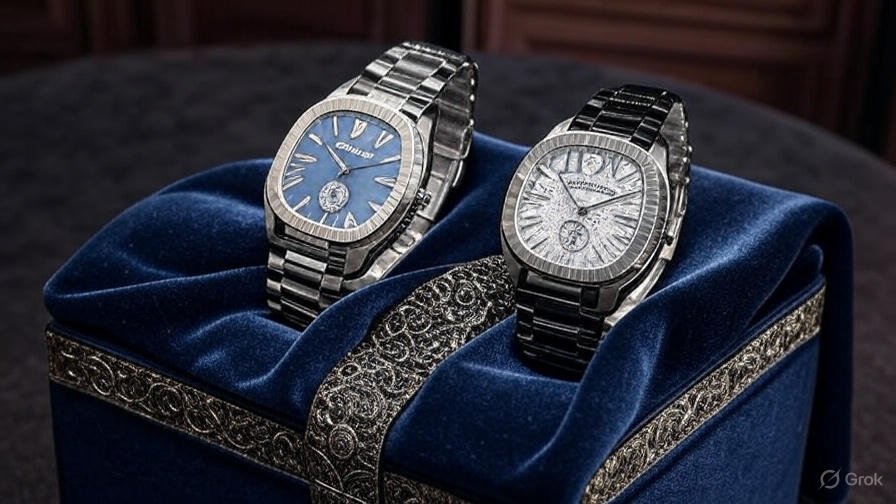In the world of luxury watches, few names carry the prestige and heritage of Patek Philippe. Renowned for their craftsmanship, timeless designs, and exorbitant price tags, these Swiss timepieces are coveted by collectors and enthusiasts alike. However, a growing trend has emerged in recent years: the rise of high-quality Patek Philippe replica that are challenging perceptions of luxury and accessibility in the watchmaking industry.
Once dismissed as cheap imitations, these modern replicas—often referred to as “super clones”—have evolved into sophisticated timepieces that mimic the aesthetics of their authentic counterparts with startling accuracy. This development has sparked debates among collectors, raised ethical questions, and prompted discussions about the democratization of luxury. In this article, we explore the evolution of Patek Philippe replicas, their impact on the market, and the broader implications for the luxury watch industry.
A Brief History of Patek Philippe Replicas
The history of replica watches dates back decades, with early iterations in the 1980s and 1990s being rudimentary at best. These early fakes were often made with low-quality materials like plated brass or plastic and featured quartz movements that lacked the smooth sweep of mechanical watches. For discerning collectors, spotting a fake was relatively easy due to obvious flaws in craftsmanship and materials.
Fast forward to 2025, and the landscape has changed dramatically. Advances in manufacturing technology have enabled replica makers to produce watches that closely resemble Patek Philippe models, such as the iconic Nautilus and Calatrava. These modern replicas often feature high-grade materials like 904L stainless steel, scratch-resistant sapphire crystals, and custom movements designed to emulate the visual characteristics of Patek Philippe’s in-house calibers. While the internal mechanics still fall short of the originals, the external appearance has reached unprecedented levels of precision.
“The devil’s in the details,” says Robert Wu, a watch collector who owns both authentic and replica Patek Philippe timepieces. “My replica Aquanaut gets the texture of the ‘Tropical’ strap surprisingly right. Is it identical to the genuine article? No, but it’s close enough to fool most people.”
Why the Surge in Popularity?
The surge in popularity of Patek Philippe replicas can be attributed to several factors. First and foremost is the issue of affordability. Authentic Patek Philippe watches often carry price tags exceeding $50,000, making them unattainable for most consumers. Replicas, on the other hand, offer a similar aesthetic at a fraction of the cost, allowing enthusiasts to experience the look and feel of luxury without the financial burden.
Another factor is the growing demand for luxury goods in an increasingly image-conscious society. For many, wearing a high-quality replica provides a sense of prestige and sophistication without the need to invest in an authentic piece. This trend is particularly evident among younger consumers who prioritize style and status but may lack the resources to purchase genuine luxury watches.
Security concerns also play a role. Some owners of authentic Patek Philippe watches opt for replicas when traveling to avoid the risks associated with wearing a high-value timepiece. A well-known actor, who preferred anonymity for legal reasons, reportedly wears a replica Nautilus during international trips to mitigate security concerns while maintaining the appearance of his authentic collection.
The Craftsmanship Behind Modern Replicas
Today’s high-end replicas, often produced by specialized factories, are a far cry from their predecessors. Companies like ZF Factory and PF Factory have gained notoriety for crafting “1:1 clones” that replicate the smallest details of Patek Philippe watches, from the texture of the dial to the weight of the case. These super clones often incorporate advanced materials and techniques, such as ceramic bezels and sapphire crystals, to achieve a level of visual fidelity that can deceive even seasoned collectors.
However, despite their impressive exteriors, replicas still fall short in terms of internal quality. Genuine Patek Philippe watches are renowned for their hand-assembled movements, which are engineered with meticulous precision. Replicas, by contrast, often use modified or generic movements that lack the durability and accuracy of their authentic counterparts. This gap in quality underscores the fundamental difference between owning a replica and an original.
“A genuine Patek Philippe is a work of art,” says Elizabeth Miller, a yacht broker and watch enthusiast. “The movement is like a symphony of engineering. Replicas might look the part, but they don’t have that soul.”
Ethical and Legal Considerations
The rise of high-quality replicas has raised significant ethical and legal questions. From a legal standpoint, producing and selling counterfeit watches is illegal in many jurisdictions, as it infringes on intellectual property rights and undermines the brand’s value. Patek Philippe, like other luxury watchmakers, invests heavily in research, development, and craftsmanship, and replicas threaten to dilute their exclusivity.
Ethically, the debate is more nuanced. Some argue that replicas democratize luxury, making high-end aesthetics accessible to a broader audience. Others contend that they deceive consumers and diminish the value of authentic craftsmanship. For collectors, the emotional and financial investment in a genuine Patek Philippe is part of its allure, and replicas can undermine that experience.
Moreover, the replica market has implications for the secondary market. While genuine Patek Philippe watches often maintain or increase in value over time, replicas have little to no resale value. This disparity highlights the investment potential of authentic timepieces, which are prized for their rarity and heritage.
The Future of Replicas in the Luxury Watch Industry
As technology continues to advance, the gap between replicas and authentic watches may narrow further, posing new challenges for the luxury watch industry. Brands like Patek Philippe are likely to respond by emphasizing the unique qualities of their timepieces, such as their handcrafted movements and storied heritage. Additionally, advancements in authentication technology, such as blockchain-based certification, could help collectors verify the authenticity of their watches.
For consumers, the decision to purchase a replica or an authentic Patek Philippe ultimately comes down to personal values and priorities. While replicas offer an affordable entry point into the world of luxury watches, they cannot replicate the craftsmanship, history, and emotional resonance of an original.
In the meantime, the replica market shows no signs of slowing down. As more people seek affordable alternatives to high-end timepieces, the demand for high-quality replicas is likely to grow. For now, the allure of Patek Philippe—whether authentic or replicated—remains as strong as ever.
Conclusion
The rise of Patek Philippe replicas reflects broader trends in the luxury goods market, where accessibility and affordability are increasingly valued alongside prestige and craftsmanship. While these super clones have impressed with their visual accuracy, they remain a controversial topic among collectors and industry insiders. As the line between replicas and originals continues to blur, the luxury watch industry faces new challenges and opportunities in defining what it means to own a piece of timeless elegance.
For those interested in exploring the world of luxury watches, the choice between a replica and an authentic Patek Philippe is a deeply personal one. Whether driven by aesthetics, affordability, or investment potential, the decision ultimately reflects the wearer’s values and appreciation for the art of watchmaking.










